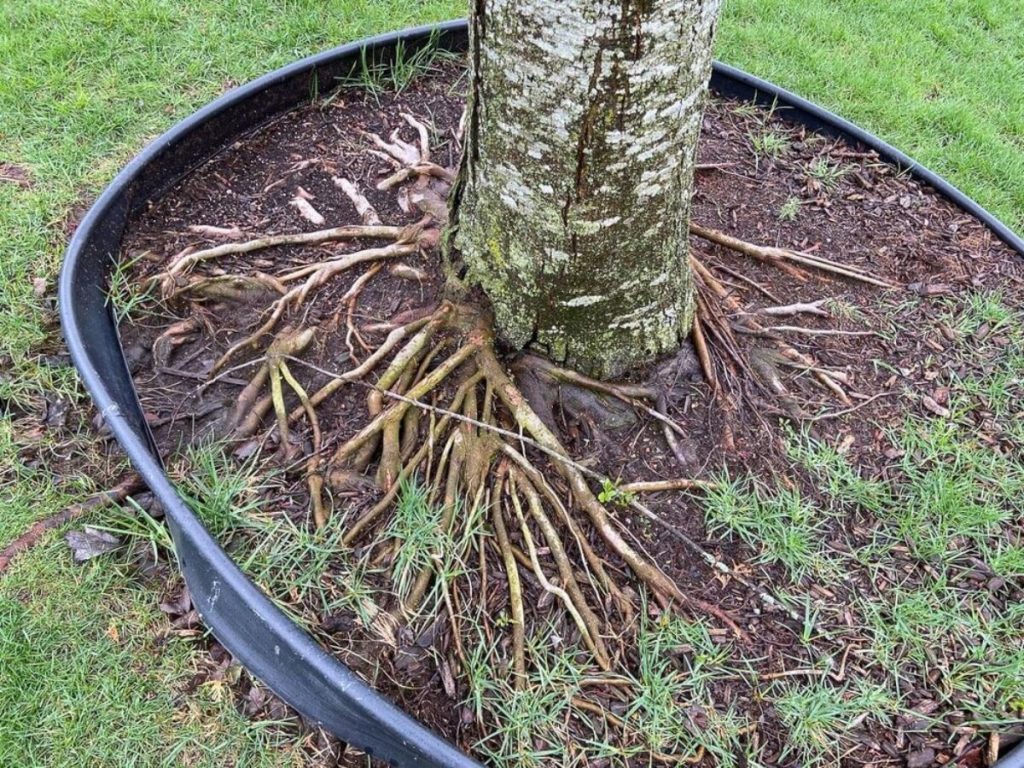How to Identify Root Flare in Trees
Many tree species have flared roots at the base of the trunk. This flare is an important structural component of the tree and helps to anchor the tree in the soil and resist tipping over in strong winds. The root flare also helps to facilitate water and nutrient uptake by the tree’s roots. Unfortunately, many trees are planted too deeply, which can cover up the root flare and cause problems for the tree. In this blog post, we’ll discuss how to identify root flares on trees.
What is Root Flare?
Root flare is the area of a tree’s trunk where the roots begin to spread out from the trunk. The root flare should be visible at ground level when the tree is planted at the correct depth. If the root flare is buried, it can cause problems for the tree, including difficulty taking up water and nutrients, decreased anchorage, and increased susceptibility to wind damage.
How to Identify Root Flare in Trees
There are a few ways that you can identify root flares on trees. One way is to look at the trunk itself. The root flare should be visible as a bulge or swell just above where the roots begin to spread out. Another way to identify root flares is by looking at the tree’s leaves. If the leaves are yellowing or dropping more than normal, it could be a sign that the root flare is buried and the tree is not able to take up enough water and nutrients. Finally, you can try digging around the base of the tree to see if you can expose any of the roots near the trunk. If you can’t find any roots near the trunk, it’s likely that the root flare is buried.
The root flare is an important part of the tree’s anatomy. It helps to support the tree and provides a transition area between the roots and trunk. A tree with an exposed root flare is not only more susceptible to damage, but it can also be a sign of underlying problems. If you think your tree might need a root flare excavation, here are some things to look for.

Signs that a Tree Needs a Root Flare Excavation
The most obvious sign that a tree needs a root flare excavation is if the roots are visible at the base of the tree. This can happen for a number of reasons, including poor planting practices, erosion, or compaction of soil around the base of the tree. If you see roots poking out of the soil, it’s time to call in a professional.
Another sign that your tree might need a root flare excavation is if the tree is leaning. This can be caused by many factors, including pests, disease, or simply inadequate support from the roots. If you see your tree leaning, it’s best to call in a professional arborist to assess the situation and determine if a root flare excavation is necessary.
A third sign that your tree may need a root flare excavation is if the bark is peeling or cracking at the base of the trunk. This can be caused by many factors, including insects, weather damage, or disease. If you see this happening to your tree, it’s best to call in a professional arborist to assess the situation and determine if a root flare excavation is necessary.
Conclusion:
Identifying root flares on trees is important for tree health. If you think that a tree may not have a visible root flare, there are a few things that you can do to check, including looking at the trunk for a bulge or swell just above where the roots begin to spread out, checking for yellowing or dropped leaves, or digging aroundthe base ofthe treeto see if you can expose any roots near the trunk. If you’re still having trouble findingtheroot flare,you can always consult a professional arborist or arborist who will be able to help you determine iftheroot flareis indeed buried. Thanks for reading!
from AAA Tree Lopping Ipswich https://ift.tt/Wfgy9nU
via IFTTT
No comments:
Post a Comment